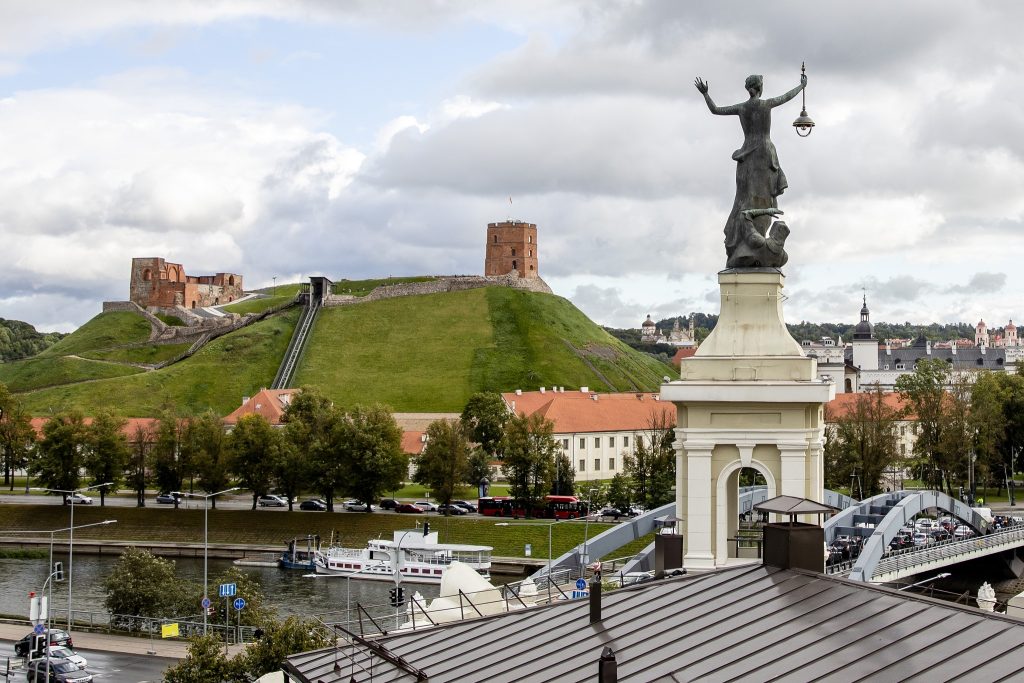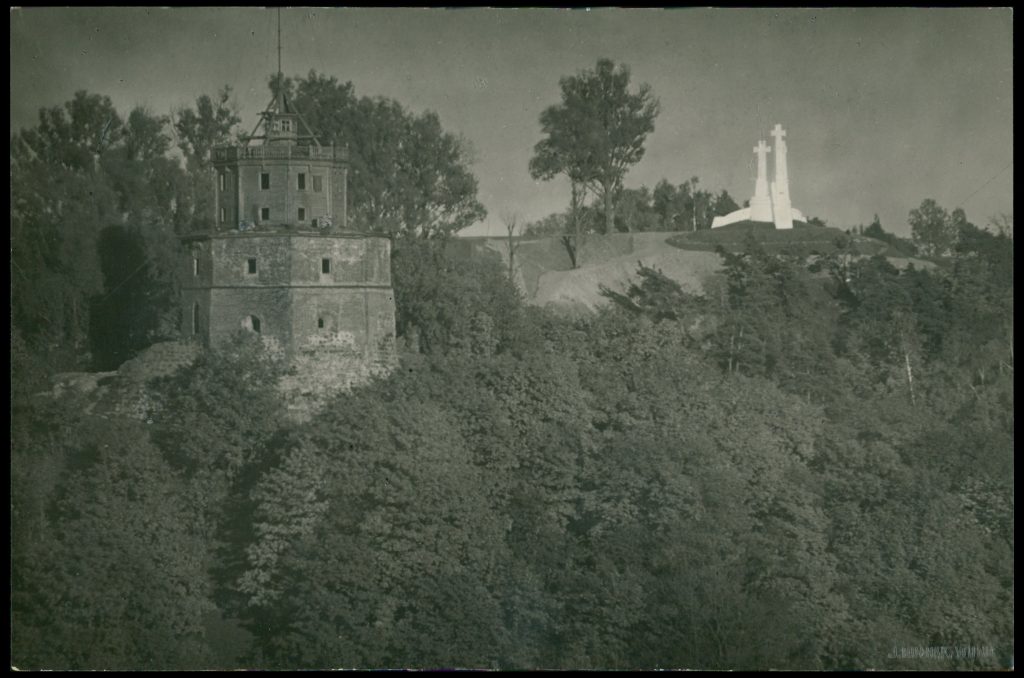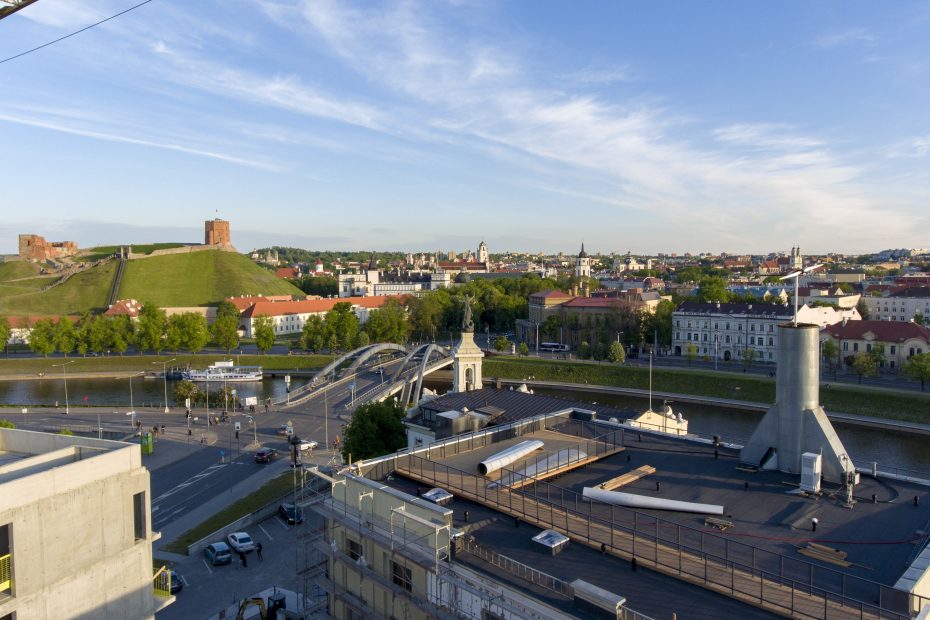The capital’s Energy and Technology Museum, located in the premises of the historical power plant, opens the museum’s roof terrace for visitors. It presents a new exhibit – an interactive Gediminas Hill stand, where visitors can record a voice greeting to Vilnius on the occasion of the 700th anniversary – and a thematic guided tour “History of Vilnius Modernization”.
On Saturday, October 8th, at 5 PM Vilnius residents and guests are invited to take part in the opening events – the guided tour and presentation of the Gediminas Hill stand. Hot tea will be served on the terrace. In January, commemorating the 700th anniversary of Vilnius, a general greeting will be created from the voice recordings collected at the stand.
Old Town from an angle never seen before
The roof terrace of the Energy and Technology Museum was equipped and prepared for visits with the funds of the European Union Regional Development Fund and Vilnius City Municipality. “The project started in 2018, during which the museum building was also renovated, new educational spaces were created and equipped, and at the end of the year we will open a new exhibition, the Transformation Hall, established on 1000 sq m in a space 6 meters underground,” said the head of the museum Mykolas Bistrickas.
“Today we are enjoying the wonderful panorama that opens from the roof terrace of the museum, we are looking at the city from a new perspective, which the people of Vilnius have never seen before. The terrace was opened so that city residents and guests could freely visit it, see the capital’s Old Town and New Town from the Šnipiškės district side,” he added.


Sculpture “Electra” (Electricity). Energy and Technology Museum Photos
Changed the lives of Vilnius residents
Since the new museum space opens, a thematic guided tour about the modernization of Vilnius will take place here. The Vilnius Central Power Plant itself was built in order to abandon gas street lighting switching to advanced electric lighting. At that time, its location – the right embankment of the Neris – was chosen as remote and suitable for an industrial building.
As the city expanded, the former power plant found itself in its center. “From this point – the Energy and Technology Museum – there is a view of Old Town, Šnipiškės, Žirmūnai districts, in this territory once were only villages. One of them, Žvejų (Fishermen’s), is now marked by the name of the street. The objects of the city visible from here became a starting point to tell about its creation and modernization,” said guide Karolina Koroliova-Barkova.


Interactive Gediminas Hill stand.
Since the museum is established to preserve and nurture the history of technology, the guided tour looks back at the history of the emergence and construction of technically advanced city facilities – the Vilnius Concert and Sports Palace, Vilnius TV tower, the three Neris bridges and others.
“The upper structure of the TV tower (which was built to improve the transmission of the newly emerging color television signal) was assembled at the bottom. The 100-ton frame was lifted to its design height in 1.5 hours by three cables for the first time in the world. It was quite a technological achievement at the time. Or one of the world’s longest optical telegraph lines was built in Vilnius. The telegraph was installed in a wooden superstructure on the Gediminas Tower, historical photos now testify to this. These technical inventions changed the lives of Vilnius residents,” noted Koroliova-Barkova.


Construction of Vilnius Concert and Sports Palace, 1967. Lithuanian Central State Archives
A greeting for Vilnius
Andžej Kuldoš, the curator of the museum’s Electronics Workshop, created an interactive stand – looking at Gediminas Hill through the transparent glass, you can see what the Upper Castle once stood there looked like. In addition, the audio guide tells the history of the Lower and Upper castles from the first knowledge about them to the present day. This project was supported by the Lithuanian Council of Culture and Vilnius City Municipality.
“The first and most prominent historical object that opens from the roof is Gediminas Tower, so I decided to give it voice, – recalled Kuldoš. – I became interested in what the Upper Castle looked like, I looked at historical photos, archaeological drawings and a 3D model, on the basis of which this drawing was created. In cooperation with the National Museum of Lithuania, we prepared information about the development of the tower – how it changed from wooden to brick, burned several times and was rebuilt.”


Gediminas Castle Tower before 1938. Photograph by Jan Bułhak
Visitors who are on the roof of the museum are encouraged to congratulate Vilnius on the occasion of its 700th anniversary. “We will assemble an audio collage, shoot a video and congratulate Vilnius in January. We live in this city, but perhaps not all of us have the opportunity to personally congratulate Vilnius – for this we have created a common platform. And we, the employees of the museum, wish the city to continue nurturing and giving meaning to its rich history,” said Kuldoš.
—
The roof terrace is open for visits during the working hours of the Energy and Technology Museum Tuesday to Sunday from 10 AM to 6:30 PM.
Registration to the opening events is here.

